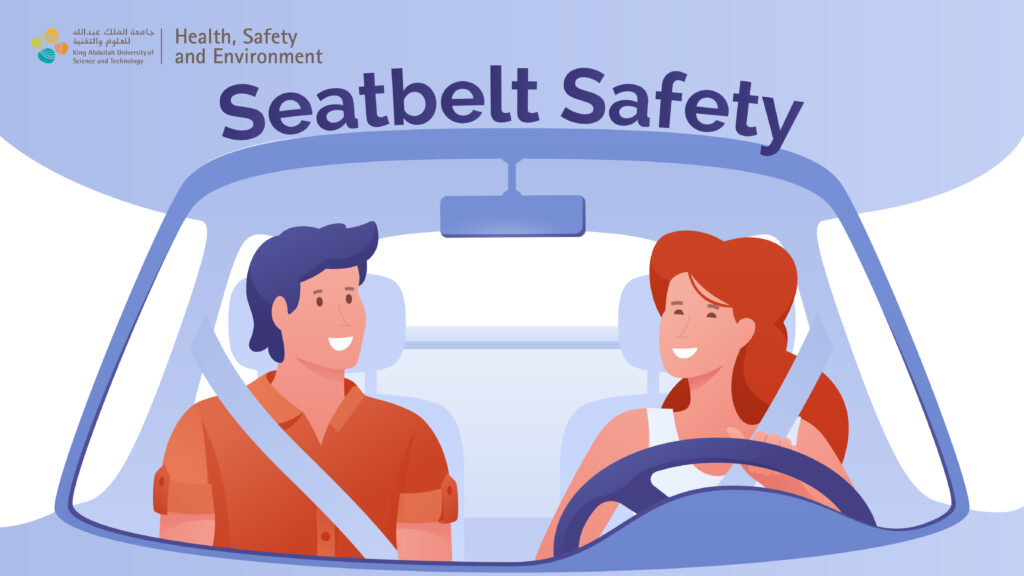
Why do seatbelts matter?
One of the safest choices that drivers and passengers can make is to wear their seatbelts – to buckle up. For adults and older children (who are tall enough for seatbelts to fit properly), seatbelt use is one of the most effective ways to save lives and reduce injuries in crashes1.
Why wearing a seatbelt is essential
- Using a seatbelt helps keep you safe and secure inside your vehicle, whereas not buckling up can result in being ejected from the vehicle in a crash, which can cause severe injury or even be fatal.
- Airbags alone are not enough to protect you during a crash.
- If you’re pregnant, use these seat belt recommendations for drivers and passengers (nhtsa.gov)2
The top six things you should know about wearing seatbelts in KAUST
- A seatbelt securely fastens a person to a car seat to prevent injury. Use a seatbelt even if the vehicle is equipped with airbags.
- The vehicle’s driver is accountable for ensuring that all passengers wear seatbelts. Penalties apply.
- The seatbelt must be in good working order and worn by the driver and all vehicle occupants while the car is moving (excluding scooters and motorcycles).
- Improperly wearing a seatbelt, such as putting the strap below your arm, puts you and your passengers at risk in a crash.
- Children and infants must be seated in a child restraint seat with a seatbelt as appropriate for their size and weight that is positioned and installed as per manufacturer guidelines.
- Children and infants riding in an affixed child bicycle seat or bicycle trailer/buggy must be firmly secured in a safety harness.
Child Safety Seats
- An age-appropriate child safety seat must be used to transport a child in a car.
- For golf carts, ensure that an age-appropriate child car seat is used that is securely fastened to the existing seat.
- Having your child sit in a properly installed seat, appropriate for their age, could help protect the child and reduce the risk of suffering from serious injuries in road accidents.
- Children under the age of 10 years must not ride in the car’s front seat, unless there is no rear seat in the car.
- For child safety seats, KAUST has aligned with KSA requirements, which state the following:
| Age | 0-2 years | 2- 4 years | 4-8 years | 8-12 years |
| Weight (KG) | 10 kg and less | 20 kg and less | 35 kg and less | More than 35kg |
| Height (CM) | Up to 80 cm | Up to 109 cm | Up to 137 cm | Over 137cm |
| Type of seat | Rearward- facing seat (in the rear only) | Forward- facing seat (in the rear only) | Booster seat | Seat belt |
Please watch the short video on how to wear a seatbelt properly.
Remember to buckle up and thank you for Keeping KAUST Safe.
For questions or comments, please contact hse@kaust.edu.sa
References
1 National Highway Traffic Safety Administration. Lives saved in 2017 by restraint use and minimum-drinking-age laws. US Department of Transportation, Washington, DC; 2019. Publication no. DOT-HS-812-683. Available at https://crashstats.nhtsa.dot.gov/Api/Public/ViewPublication/812683external icon. Accessed November 8, 2022
2National Highway Traffic Safety Administration. If You’re Pregnant: Seat Belt Recommendations for Drivers and Passengers (nhtsa.gov). Available at https://www.nhtsa.gov/sites/nhtsa.gov/files/documents/pregnant-seat-belt-use.pdf. Accessed on November 8, 2022
